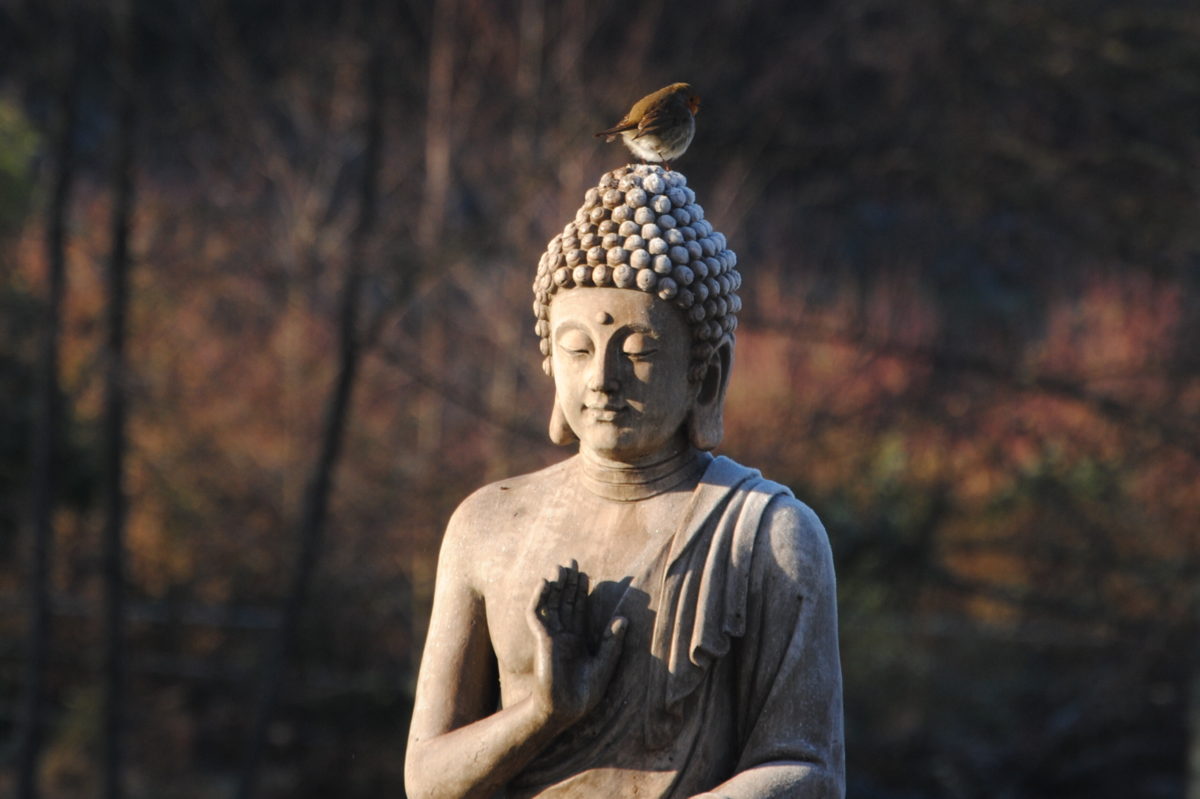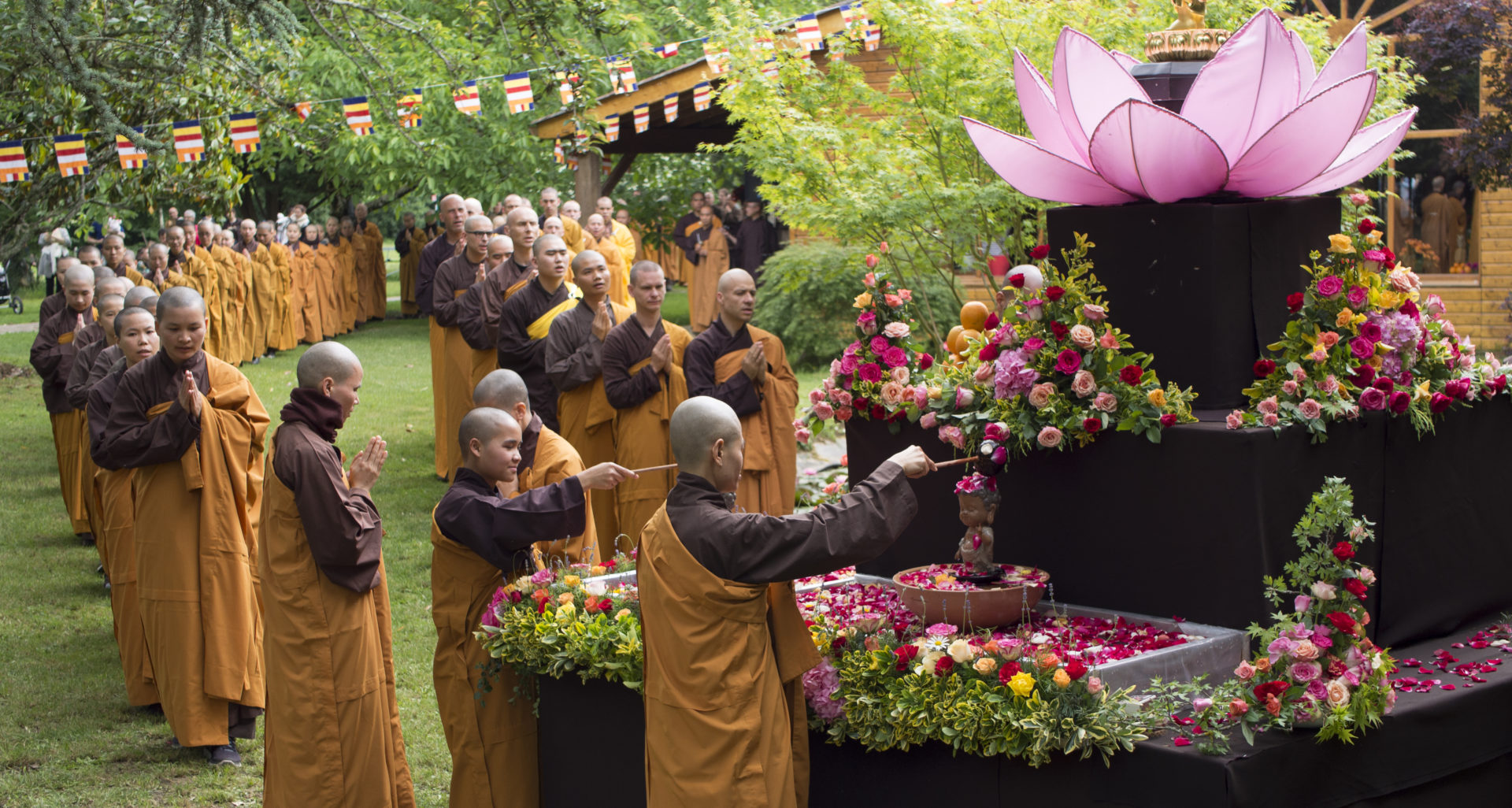Approaches to Behavior Difficulties in the Sangha

In August 2016, the Mental Health and Well-being Practices Committee of the North American Dharma Teachers Sangha Care Taking Council released a booklet entitled “Mindful Approaches to Behavior & Mental Health Difficulties: In Plum Village Sangha Practice.” The booklet was intended to share insights about responding to behavior that disrupts Sangha harmony, sometimes in ways beyond the Sangha’s ability to facilitate transformation of suffering.
Approaches to Behavior Difficulties in the Sangha

In August 2016, the Mental Health and Well-being Practices Committee of the North American Dharma Teachers Sangha Care Taking Council released a booklet entitled “Mindful Approaches to Behavior & Mental Health Difficulties: In Plum Village Sangha Practice.” The booklet was intended to share insights about responding to behavior that disrupts Sangha harmony, sometimes in ways beyond the Sangha’s ability to facilitate transformation of suffering. Here are some excerpts.
Examples of behaviors that have challenged Sangha harmony
Most people come to Sangha to find relief from suffering. Some suffering is individual, coming from their own lives. Some suffering is collective, coming from a wider society and a world suffering deeply from enduring racism, violence and war, hunger and poverty, and climate change, to name a few sources.
Given these conditions, it is understandable and laudable that people in troubled times like the present seek refuge in Sanghas, spiritual communities, twelve-step programs, and support groups of all kinds. Some folks carry with them deep distress from personal and/or societal mistreatment. Most people’s troubles stay private; some show up in our Sanghas, which can cause discomfort, disruption, and sometimes even the destruction of Sangha safety and harmony.
Below are categories of disruptions reported in the 2015 survey of U.S. and Canadian Dharma teachers.1
UNAWARENESS OF HABIT ENERGY
- One person repeatedly took long turns during Dharma sharing, leaving no time for others, with no awareness of how long sharing limited others.
- One person asserted views in a loud voice with judging words during Sangha and in side conversations.
- One person repeatedly cried for the majority of their Dharma sharing time. This caused discomfort and upset among some members. Facilitator received calls or emails complaining, “Sangha is not a therapy group.”
PERSONAL, SOCIETAL, ENVIRONMENTAL CAUSES AND CONDITIONS INTRUDING ON SANGHA
Hard times can cause much suffering, which spills over into the Sangha.
- A regular Sangha member became homeless. At each subsequent Sangha meeting, they would ask Sangha members for support or a place to sleep. This became increasingly uncomfortable for other Sangha members.
- A Sangha member who struggled with addictions would occasionally overdose. Their Sangha sharing after overdoses often involved thoughts of suicide, which caused major concern among Sangha members.
OPPOSITION TO SANGHA FACILITATOR OR GUIDELINES
- A Sangha member insisted that things be done their way, including not honoring the practice forms of inviting the bell or bowing before and after speaking.
- A Sangha member was unable or unwilling to follow Dharma sharing guidelines, despite coaching.
- One Sangha experienced a steady and corrosive push and pull between the Sangha facilitator and several Sangha members over format, decision-making, and readings. The discord caused much confusion and disharmony in the Sangha. After trying various solutions, the facilitator and other Sangha members eventually left the Sangha.
- A Sangha member who declared himself an Order of Interbeing aspirant was not considered ripe for aspirancy by several Order of Interbeing Sangha members, but enlisted other Sangha members’ support, causing disagreement in the Sangha that persisted for some time.
SEXUAL HARASSMENT AND THREATENING BEHAVIOR
- One Sangha member wrote unsolicited and unwanted emails to another Sangha member, asking for a relationship.
- A Sangha member followed another member home for weeks.
- One Sangha member made sexual comments and gestures to other Sangha members and became angry when told the conduct made Sangha members uncomfortable.
UNEXPECTED OR UNUSUAL BEHAVIORS
- Someone began coming to Sangha who appeared spiritually sincere but was inappropriate in Sangha sharing using loud singing and taking a lot of time and space. Coaching did not help.
- Someone came to Sangha, acted paranoid, checked every room, was restless, then left. This upset Sangha members.
- Someone tried to give out business cards and interacted with Sangha members during walking meditation.
The frame and language of mindfulness in describing mental health difficulties
Each of us experiences a spectrum of continually changing mental states, sometime happy, peaceful, joyful states, and sometimes unwholesome, painful, or distressed states. We try to see the Buddha nature of every human being, despite any particular historical manifestation. Realizing this should give us insight into the changing nature of mind and give us pause about separating ourselves from others.
Yet some mind states and behaviors—discomfort, confusion, disruption, worry, distraction, fear—may cause difficulty in a Sangha and call for a skillful response. Our practice calls upon Sangha members and Sangha facilitators both to respect and protect the individual whose suffering seems to be cause of the problem and to protect the Sangha from harm.
Engaging with unskillful behavior in Sangha
Some Sanghas walked a middle path to successfully resolve difficulties with unskillful behaviors. They recognized the Sangha intended to welcome everyone but was not always able to meet some practitioners’ needs. To protect the Sangha, they set clear guidelines and boundaries regarding expected and acceptable behavior. At the same time, they tried not to make the Sangha body inflexible or unwelcoming to diverse practitioners.
GENERAL APPROACHES
- Clear Sangha membership protocols, boundaries, structure, and purpose can help promote Sangha harmony.
- Inclusivity and welcoming all are fundamental to our Sanghas. Yet, a basic condition for Sangha participation is that an individual is able to be in a Sangha in a way that does not overwhelm the functioning of the Sangha. Sometimes a person will be unaware of his or her impact on the group.
- While all Sangha members are asked to practice accepting people whom we perceive as pleasant or unpleasant, discernment is also an essential practice for maintaining Sangha harmony.
- In general, a Sangha member’s behavior cannot be allowed to overshadow the fundamental purpose and harmony of the Sangha.
- When a Sangha member clearly cannot participate in a harmonious way in Sangha, the Sangha facilitator or other Sangha members can be bridges to other kinds of help or support.
STRUCTURES TO PROMOTE SANGHA WELL-BEING
Some Sanghas have used structures, policies, and protocols to create a sound, cohesive practice container that may reduce the occurrence of behavior that disrupts Sangha harmony. Some examples include:
- Create a clear process for becoming Sangha “member.”
- Maintain strong Sangha forms and format.
- Have a Sangha caretaking council.
- Establish boundaries and adhere to the Mindfulness Trainings.
ACTIONS TO PROMOTE SANGHA WELL-BEING
- Talk to the person directly and practice deep listening to understand the nature of the problem and determine what needs aren’t being met and how they could be met. Help the person see what the problem is for others or for the Sangha.
- View it as a practice area for Sangha members. The behaviors we are focusing on are often quite unsettling for all Sangha members. As mentioned earlier, it may help to ask Sangha members to look into their own fears, discomfort, safety, and re-stimulations of past hurts that the current situation may remind them of. This can be a very helpful process for healing, helps develop compassion, and avoids blaming the “other,” feeling victimized, or further isolating ourselves from the human being trapped in his or her suffering. View the difficulties as opportunities to look deeply and stretch our practice.
- Make skillful use of well-developed Plum Village practices such as Flower Watering, Peace Treaty, and Beginning Anew.2 In recent years, the North American Dharma Teachers have developed a conflict resolution protocol that can adapted for Sangha use.3
- Provide a range of meditation practices. Sangha facilitators have used a variety of practices to help practitioners handle their mind states. When a Sangha member is particularly agitated and shows body restlessness, walking meditation, especially outdoors when weather and surroundings permit, has helped calm agitation.
- Ask someone to leave Sangha. Sometimes, it is necessary to ask the person not to come back to Sangha, for his/her sake and the Sangha’s sake. The Sangha member requesting the person not to return should be able to communicate clearly and directly and suggest a next step with awareness of his or her own state of mind. Hopefully, the person accepts the request. On rare occasions, more firmness is needed. It may help if the individual takes a break from Sangha practice to work on specific problem areas. Later, he or she could check back in with the facilitator or caretaking council to assess progress made.
RESOURCES
Develop a list of local mental health resources, twelve-step programs, or other support groups. Develop relationships with Order of Interbeing members and Dharma Teachers. For further information, please email wellbeing@orderofinterbeing.org. A member of the Mental Health and Well-Being Practices committee will contact you to learn more about your situation and try to connect you with an appropriate person. Naturally, we will keep your inquiry confidential.
Editors’ note: In conclusion, the same things happen in Sangha that happen outside Sangha. The difference is that we are applying the practice to the difficulties. We hope our Sanghas can embrace the difficulties and use our practices skillfully. Many people have dealt with Sangha difficulties over the years and may be useful resources. We encourage balancing confidentiality with using Sangha eyes. We learn to live in harmony in the world by learning how to restore harmony to our Sanghas.


